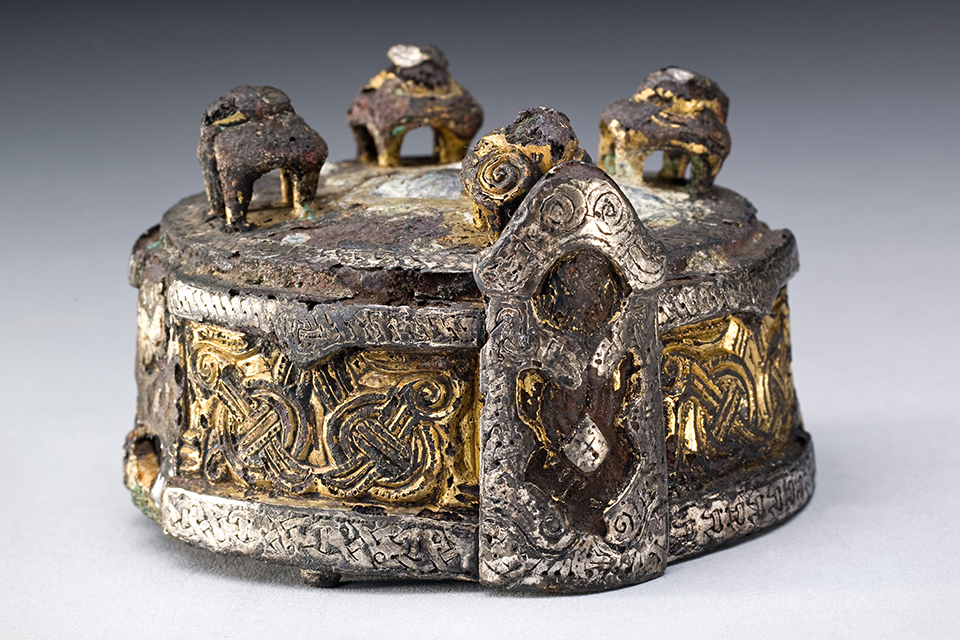Old Norse literature offers us a handful of strange and disturbing poems. One of these, the Völuspa, continues to haunt even modern-day readers by lifting the veil to a strange world where women held their own. A new book out in May explores part of this world in depth
The Norse Sorceress. Mind and Materiality in the Viking World
Edited by Leszek Gardeła, Sophie Bønding and Peter Pentz
Oxbow Books, August 2023 (Pre-Order)
ABSTRACT:

Bringing together scholars from various disciplinary backgrounds, the book aims to provide new insights into the reality of magic and its agents in the Viking world beyond the pages of medieval texts. The authors explore new trajectories for the study of past mentalities, beliefs, and rituals, as well as the tools employed in these practices and the individuals who wielded them. In doing so, the volume engages with several topical issues of Viking Age research, including the complex entanglements of mind and materiality, the cultural attitudes to animals and the natural world, and the cultural constructions of gender and sexuality. By addressing these complex themes, the authors offer a nuanced image of the völva and related magic workers in their cultural context. The volume is intended for a broad, diverse, and international audience, including experts in the field of Viking and Old Norse studies, but also various non-professional history enthusiasts.
The Norse Sorceress: Mind and Materiality in the Viking World is a key output of the project Tanken bag Tingene (Thoughts behind Things) conducted at the National Museum of Denmark from 2020 to 2023 and funded by the Krogager Foundation.
TABLE OF CONTENTS:
Part 1: Norse myths, rituals, and material culture
- An introduction to Old Norse religion(s) and magic
- The theoretical and methodological framework: Researching the Viking mind
- Gods and other supra-human entities: Communication and manipulation with the Otherworld(s)
- The völva’s ritual repertoire between magic and divination
- Between the material and immaterial: People, texts, and object-agencies in the Viking mind
- Religious objects in the Viking world
- Gender in the Viking world
- Folklore as a resource on Old Nordic religion and belief: Folkloric perspectives on the völva
Part 2: Places and spaces: Rituals and their setting
- Inside, outside and in-between: An overview of the spaces and places of Norse rituals
- Rituals in temples and other ‘holy buildings.’
- Rituals in the hall
- Rituals in domestic work and outbuildings
- Rituals in the open landscape
- Hoard depositions at elite sites
- Processions Funerary practices
- Off with their heads: Ritualised executions and human sacrifices in the Viking world
- Women and sacrifice: Victims, catalysts, agents or orchestrators?
- Surely every live man fades among the dead:Fear and desire in the afterlife of Viking Age graves
Part 3: Animals in ritual practices
- Animals in Old Norse religion: An introduction
- Birds in Late Iron Age and Viking Period pre-Christian religions and iconography
- Horses in Viking Age ritual action
- Dogs and wolves
- Snakes
- The workshops and themes of the Oseberg carvings
Part 4: Ritual specialists
- Ritual specialists in the Viking world: An introduction
- Gender, prophecies, and magic: Ritual performances in Denmark before the Viking Age
- Female sacral leadership: An onomastic-archaeological perspective
- The sexual ambiguity of seiðr performers
- The archaeology of Viking Age ritual specialists: An introduction
- Case study 1: Fyrkat IV
- Case study 2: The Birka sorcerers
- Case study 3: Klinta
- Case study 4: Gutdalen
- Case study 5: Gerdrup and Trekroner-Grydehøj
Part 5: The sorcerer’s toolkit
- Introducing the sorcerer’s toolkit
- Magic staffs
- Amulets and talismans
- Case study 1: Miniature chairs
- Case study 2: Miniature animals
- Case study 3: Miniature weapons: Swords, spears, axes, shields, helmets
- Case study 4: Wearing a banner: Cloak pins with miniature weather vanes
- Case study 5: Miniature wheels
- Case study 6: Beads from völva graves and analogous hoards Nordic masking traditions and the völva Narcotics and make-up
ABOUT THE AUTHORS:
Leszek Gardeła is a researcher at the National Museum of Denmark. He completed his PhD in archaeology at the University of Aberdeen in 2012 and has since participated in numerous research projects in Germany, Iceland, the Isle of Man, Norway and Poland. He has published extensively on Viking Age beliefs, ritual practices, warfare, identity and cultural interactions.
Sophie Bønding is a Postdoctoral Researcher at the National Museum of Denmark. She holds a PhD in the Study of Religion and specialises in religious beliefs and behaviours among Viking Age Scandinavians, studied through written and material sources.
FEATURED PHOTO
Box brooch from Gotland worn by Harold Blutooth’s Sorceress © National Museum of Denmark/Arnold Mikkelsen CCBYSA




